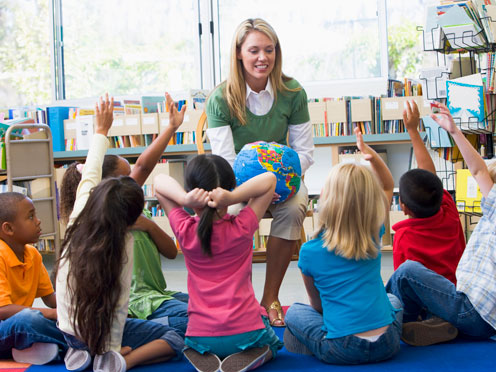Written by: Tiffany Westry
Need more info? Contact us
 The percentage of nuclear families in the United States has steadily declined over the past 50 years. According to the United States Census Bureau, 73 percent of all American children in 1960 lived in a family with two parents in their first marriage. Today, fewer than half of children in the United States live in what is also deemed a “traditional” family.
The percentage of nuclear families in the United States has steadily declined over the past 50 years. According to the United States Census Bureau, 73 percent of all American children in 1960 lived in a family with two parents in their first marriage. Today, fewer than half of children in the United States live in what is also deemed a “traditional” family.
According to early childhood education experts at the University of Alabama at Birmingham, education policies and practices have not evolved to the degree necessary for educators and other professionals to best serve the growing number of diverse families.
“The hallmark of early intervention and childhood special education is a family-centered approach,” said Jerry Aldridge, Ed.D., professor emeritus in the UAB School of Education “We’re in a time when more parents work outside of the home, more families reflect various racial and ethnic backgrounds, and more families are composed of individuals other than a mother and father. It is more important than ever to identify and adapt to these evolving family structures to appropriately serve these hybrid families.”
In a paper published in the journal Childhood Education, experts in the UAB School of Education Department of Curriculum and Instruction explore ways teachers and other professionals can successfully work with children from hybrid families
A “traditional” or nuclear family, as it is mostly commonly known, is a family group that consists of a father, mother, and their biological or adopted children. Hybrid families, as defined by Aldridge, are different in at least three ways from a traditional family in the areas of ethnicity, gender, race, culture, language, religion, ability or the methods in which children were brought into the family.
For example, a single Korean mother has a daughter with cerebral palsy. She attends public school and also receives early childhood special education services. Her mother doesn’t speak English and belongs to a very small congregation of Jehovah’s Witnesses who do not celebrate holidays or birthdays. However, her mother cannot pick her up from school each time a celebration is held there. She has limited social support, no family support and does not know what to do about her daughter’s exposure to these types of celebrations in school.
“Arbitrary federal, state, local and school regulations often create big challenges for hybrid families,” said Jennifer Kilgo, Ed.D., professor of early childhood special education. “Classroom practices and activities can also create challenges. Whether there is a language or cultural barrier or you have a child with same-sex parents who wish to keep the particulars of the family structure private, these families often face invisibility, marginalization or scrutiny, during what may be considered harmless activities such as, “Parents’ Night” or assignments that require students to gather and present details about their families. Many teachers have no appropriate models for working with hybrid families or other forms of difference. Alternatives that address the needs of hybrid families require much knowledge, consideration, planning, work and support from other professionals.”
| "Many teachers have no appropriate models for working with hybrid families or other forms of difference. Alternatives that address the needs of hybrid families require much knowledge, consideration, planning, work and support from other professionals.” |
Aldridge and Kilgo suggest that three sustained efforts must be taken as the initial steps to determine how early childhood educators can work collaboratively with all families for the best possible education of all children.
Defining family structures
In the United States, children’s individual differences have been explicitly defined through the Individuals with Disabilities Education Act (IDEA). However, this is not the case for terminology associated with families or cultures. Educators and researchers have been reluctant to clarify language related to families and cultures.
“To a certain extent, this is understandable because educators already deal with so many definitions and acronyms related to our profession,” Aldridge said. “Some educators equate defining with labeling, discriminating and marginalizing. Others question why family structures should be delineated at all, advocating for each family to be considered unique, with its own special needs. Of course, educators should work with families individually to learn about and value their unique characteristics. Defining hybrid families is not intended to label them or to take anything away from traditional families. Educators can strive to continually adjust to the specific nature of each hybrid family.”
Working for change at the micro level
Hybrid families and other diverse family structures must be recognized and accommodated in education. For example, teachers can work to change how a school organizes “Parents’ Night.” A good place to start is with the name for the event. “Family Night,” for example, would be a more inclusive term. Beginning to make a difference at the micro level is an excellent place to start for teachers who may be overwhelmed by the thought of becoming change agents.
Working for change at the macro level
Local, state and federal policies must be challenged to be more inclusive. Aldridge and Kilgo suggest educators who are involved in political action networks may have a better chance of influencing systemic change than those who try to make a difference at the macro level by themselves.